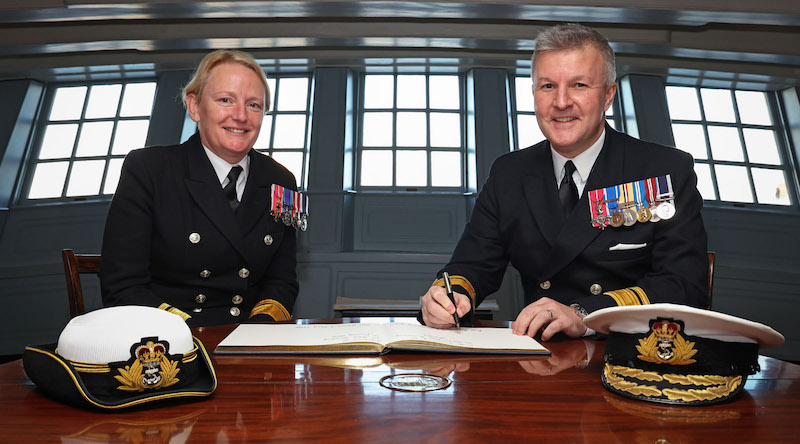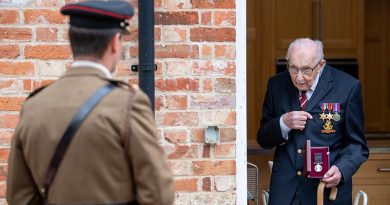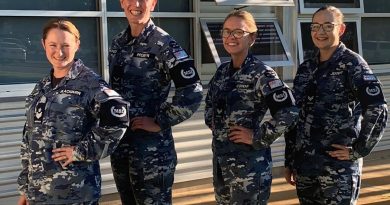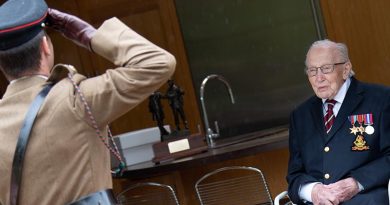First female admiral in the Royal Navy

A centuries-old ‘glass ceiling’ in the UK was shattered this week as Jude Terry became the first female admiral in the history of the Royal Navy.
CAPTION: Rear Admiral Jude Terry and Rear Admiral Philip Halley in the ‘Great Cabin’ of HMS Victory, Portsmouth, UK. Royal Navy photo – Crown copyright.
With the numbers, breadth of talent and experience of women in today’s Senior Service, Rear Admiral Jude Terry believes there will be many more women to reach the rank – and higher.
After nearly 25 years’ service at home in the UK and around the globe, the 48-year-old from Jersey took the helm as Director of People and Training and Naval Secretary.
That makes the rear admiral responsible not only for more than 40,000 regular and reservist sailors and Royal Marines, but also the Royal Fleet Auxiliary – who operate the Navy’s support ships – plus civil servants and contractors, all part of the gigantic jigsaw that allows the Royal Navy to operate.
Women have served in the Royal Navy since the Wrens in World War I and have been going to sea since 1990.
Today there is no position or branch of the service not open to women.
Rear Admiral Terry said the fact that she was a woman was irrelevant to her post and rank – simply that “someone has to be first” and she most definitely will not be the last – there are currently four female commodores (the next rank down) and 20 female captains.
Passionate about diversity, inclusivity, equality and social mobility, Rear Admiral Terry believes talent, ability and dedication were the only factors determining success – “background, education and patronage count for nothing, what you personally bring to the Royal Navy is everything,” she said.
“The world has changed in terms of what people want from life and careers, whatever their gender, and the Navy needs to work to modernise our organisation to support this change – a diverse and inclusive workforce is a better place for all but is also proven to deliver better outcomes.”
First Sea Lord Admiral Sir Ben Key said Rear Admiral Terry was “a great example of all the amazing women serving today, and a role model for all who serve and those who follow”.
She took the reins of her department from her predecessor Rear Admiral Phil Hally following a ceremony aboard HMS Victory in Portsmouth.
“It is an absolute honour and privilege to assume the post of Director People and Training and Naval Secretary today,” she said.
“Our people and their families are at the heart of our ability to deliver on operations abroad and in the UK.
“I look forward to leading my team in supporting them, using modern approaches, helping us all to be the best we can be, and building on the work already done by my predecessor.
Beyond immediate issues impacting today’s Navy, Admiral Terry’s department is also charged with helping to shape the Royal Navy and its people up to 2040, when there will still be two 65,000-tonne aircraft carriers in service, alongside new Dreadnought-class submarines, three new classes of frigates and a new generation of destroyers.
She said that was quite a challenge for someone who joined the Navy in 1997 as a 24-year-old graduate and only planned to stay for eight years.
At the time, no female officer had commanded a warship. There were few role models, and fewer still with seagoing experience.
Eight years turned into 25 because, she says, “if you enjoy your job, you keep on doing it”.
Since joining the Royal Navy in 1997, Rear Admiral Terry has served aboard survey vessel HMS Scott, and spent two spells with helicopter carrier HMS Ocean, the latter as commander logistics during operations in the Baltic and Gulf.
Last year she represented the UK alongside senior female military officers from across NATO and allied/partner nations on Halifax International Security Forum’s Peace With Women Fellowship, which helps shape both future democracy and global security, with a particular emphasis on leadership roles for women in these key areas.
Rear Admiral Terry also helped plan the withdrawal of UK fighting forces from Afghanistan, reducing the footprint of 9500 personnel to around 5000.
And as military assistant to the Chief of Joint Operations, who was responsible for more than 20 operations worldwide, she was among the first personnel on the ground in Sierra Leone during the successful operation to stop the spread of Ebola in 2014.
Those efforts during her three-year spell at the Permanent Joint Headquarters – during which she was also involved in the end of Operation Herrick and the establishment of Operation Toral in Afghanistan, overseeing the drawdown of bases at Lashkar Gar, Bastion and Kandahar – earned her an OBE.
.
.

.
.





